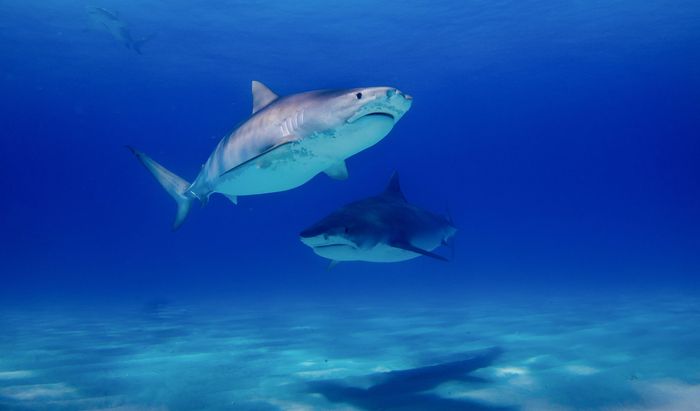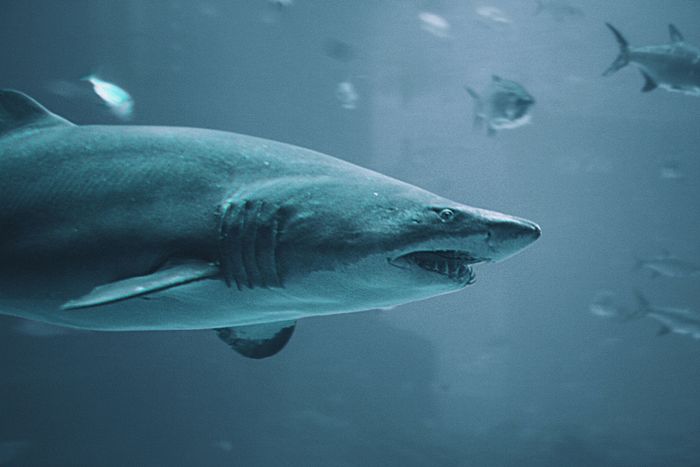The Deepest Detected Shark Dives: How Deep Do They Go?
You can now stop wondering how deep sharks really go. We have all the details on the deepest detected shark dives.

The deep sea is one of the largest regions on the planet with the most distinct ecosystems, yet it stays the least explored. This cold, unfamiliar place hosts endless forms of interesting and weird-looking creatures lurking in the deep. One of which is the deep-water sharks. What many do not know is that sharks don’t just stay near the surface or at a human diving depth when we find them during diving or even attacks, but more than half of all the shark species live 700 feet below or deeper in the ocean.
At below 700 feet, the aquatic conditions become harsh with extremely cold temperatures, high pressures, and no light. This has caused a wide array of deep-sea shark species to go through evolutionary adaptations. While they resemble some similar characteristics as the shallow-water sharks, deep-sea sharks possess unique biological traits such as slow growth and metabolic rate as part of the adaptation. Even their physical traits, particularly their almost alien-like appearance, set them apart from shallow-water sharks.
For years, scientists have studied the deep sea including the species that live down there such as sharks. The study of the deepwater sharks’ location, movement, and behavior are important factors for conservation purposes. But how deep do sharks go? In this article, let’s find out why sharks dive deep, the devices used to detect them in deep waters, and some examples of interesting deep-sea sharks and their deepest dives.

Understanding Why Sharks Dive Deep
Deepwater sharks are known to live in an area of the ocean called the twilight zone, which is from 600 to 3,300 feet below the ocean surface. With barely any light, less oxygen, extremely high pressure, and cold temperature, this zone is supposed to be deprived of food and other resources. In contrast to this, studies show that the deep sea is home to ten times more fish than many scientists thought. This is equivalent to a hundred times more than the global seafood catch.
For those sharks living most of their life in the deep sea, these harsh conditions in the twilight zone are something they have already adapted to. But what about shallow-water sharks? Some of these sharks that have been tracked showed vertical migrations. Diving deep exposes sharks to harsh conditions, so there must be a good reason for them to behave in such a manner. The tracking data from the University of Washington’s study on white sharks showed that these sharks spend their day diving into the deep and resurfaces at nighttime. This can be explained by the migration of their prey such as squids to feed on algae on the surface at night and dive deep to hide from predators such as the sharks. This tells us that this behavior is associated with foraging.

Tagging Sharks and Detecting Their Dives
Tagging of sharks and other animals has been practiced since the 13th century. This is important to track and record the movement and location of animals. Without proper tagging and tracking, efforts to conserve threatened or endangered animals are useless.
In the 1900s, the identification tags or markings on the body of the animals were used for tracking, but this method doesn’t tell what happens in between the time the tag was marked and the time the animal was seen again. This tagging technique evolved into radio tags in the 1950s and satellite tags three decades later, which resulted in the transformation of ecological science.

There are two types of tags primarily used for sharks—satellite and acoustic tags. The satellite tags work by sending a signal via satellite every time a shark’s fin rises above the surface, hence, considered as a short-term data logger only. Acoustic tags, on the other hand, are a long-term logger option that works for up to 10 years. They emit pulses and transmit patterns to identify different sharks when they pass near a receiver located underwater. Water temperature, diving depth, and swimming speed of the sharks can also be recorded by these.
If you are wondering if tagging is painful for sharks. The answer here is no. Since many tags are attached to the fins, which don’t have a nerve, tagging doesn’t cause any harm to them. However, these devices are constantly being improved to increase performance, reliability of data acquired, sensor capabilities, as well as animal welfare.

Deep-sea Sharks with the Deepest Dives Recorded
Sharks can be found on the shallow waters and dive deep until around 10,000 feet, as concluded by many scientists. This is confirmed by the study done by Dr. Priede et al. in 2006 when they studied the deep oceans for over 20 years. One of the observations here was that sharks appeared only at less than 10,000 feet and never came out at the deep ocean basins. The reason for this is that they are outcompeted by bony fishes that live even deeper. Now, let’s take a look at some deep-sea sharks that have the deepest dives recorded.
Using diel vertical migration, the most popular great white sharks were recorded to dive up to 500 meters (1640 ft) during the day and resurface at 250 meters deep during the night for foraging, as previously mentioned. Another behavior that sharks were observed to do is rapid oscillatory diving or ROD, where they exhibit repeated dives. Studies have revealed that this behavior is common for male sharks during their mating season from May to July. At 4,000 feet, a white shark named “Shack” who has frequented the waters in New Zealand has been recorded to dive the deepest for white sharks.
Another species that has one of the deepest diving records are frilled sharks. This ancient shark species normally lives at 3,300 feet of the Atlantic and Pacific Oceans, but once caught at 5,150 feet. Scientists believe that some of them even hunt deeper but there is no evidence yet. This shark is characterized by its unique frilled crown, hence the name frilled shark, and large liver that helps maintain its buoyancy and resist high pressures.
Found to be diving even deeper than white sharks and frilled sharks are the bluntnose sixgill sharks, the world’s third-largest predatory shark. Their name is taken from their unique gills features. Instead of a normal 5 gills, they have 6. With a heavy body and round snout, they are commonly found at 700 to 2,500 feet below the waters of temperate and tropical regions all over the world. However, some bluntnose sixgill sharks have been caught diving up to 6,000 feet when they do vertical migrations during the day.




